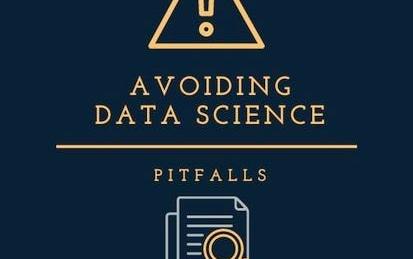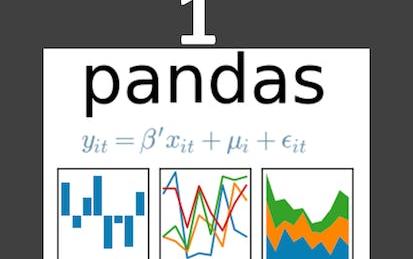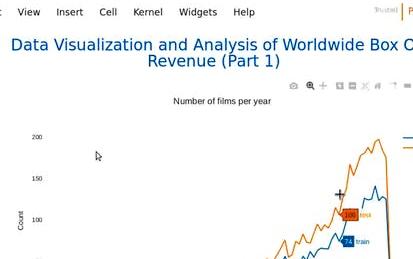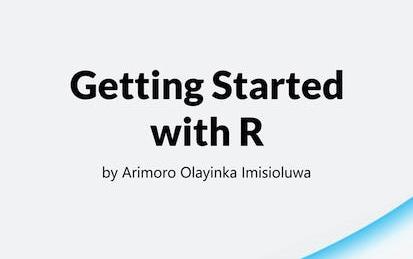

Our Courses

Avoiding Data Science Pitfalls
In this 2-hour long project-based course, you will learn some important statistical concepts with examples & visuals, concepts that are most commonly mistaken in data analysis and how to ensure you don't fall for them.
-
Course by

-
 Self Paced
Self Paced
-
 3 hours
3 hours
-
 English
English

ESG Data & Accountability
In this course, we’ll introduce students with basic knowledge of traditional financial products to data-driven resources they can use to complement their fundamental analysis.
-
Course by

-
 Self Paced
Self Paced
-
 20 hours
20 hours
-
 English
English

Advanced R Programming
This course covers advanced topics in R programming that are necessary for developing powerful, robust, and reusable data science tools. Topics covered include functional programming in R, robust error handling, object oriented programming, profiling and benchmarking, debugging, and proper design of functions. Upon completing this course you will be able to identify and abstract common data analysis tasks and to encapsulate them in user-facing functions.
-
Course by

-
 Self Paced
Self Paced
-
 18 hours
18 hours
-
 English
English

Using Basic Formulas and Functions in Microsoft Excel
Have you started using spreadsheets like Excel and want to learn how to write formulas and functions to perform simple data analysis? In this project, you will learn about the general format for writing formulas and functions in Excel to perform analysis on the sales data from a sample company. In this analysis, you will calculate total sums of profits, you will learn how to use functions to analyze the popularity of the items sold and you will also learn how to calculate averages and percentages of monthly profits.
-
Course by

-
 Self Paced
Self Paced
-
 3 hours
3 hours
-
 English
English

Data Manipulation at Scale: Systems and Algorithms
Data analysis has replaced data acquisition as the bottleneck to evidence-based decision making --- we are drowning in it. Extracting knowledge from large, heterogeneous, and noisy datasets requires not only powerful computing resources, but the programming abstractions to use them effectively.
-
Course by

-
 Self Paced
Self Paced
-
 20 hours
20 hours
-
 English
English

Visualizing & Communicating Results in Python with Jupyter
Code and run your first Python program in minutes without installing anything! This course is designed for learners with limited coding experience, providing a foundation for presenting data using visualization tools in Jupyter Notebook. This course helps learners describe and make inferences from data, and better communicate and present data. The modules in this course will cover a wide range of visualizations which allow you to illustrate and compare the composition of the dataset, determine the distribution of the dataset, and visualize complex data such as geographically-based data.
-
Course by

-
 Self Paced
Self Paced
-
 11 hours
11 hours
-
 English
English

Fundamental Tools of Data Wrangling
Data wrangling is a crucial step in the data analysis process, as it involves the transformation and preparation of raw data into a suitable format for analysis. The "Fundamental Tools for Data Wrangling" course is designed to provide participants with essential skills and knowledge to effectively manipulate, clean, and analyze data. Participants will be introduced to the fundamental tools commonly used in data wrangling, including Python, data structures, NumPy, and pandas.
-
Course by

-
 Self Paced
Self Paced
-
 27 hours
27 hours
-
 English
English

Conducting Exploratory Data Analysis
Conduct exploratory data analysis with a systematic approach to investigate different aspects of your data: comparisons, relationships, compositions, and distributions. This guided project gives you a framework so you can conduct your own exploratory data analysis and make your work more professional and organized. The language is Python and the libraries used are seaborn, pandas, and matplotlib.
-
Course by

-
 Self Paced
Self Paced
-
 3 hours
3 hours
-
 English
English

Introduction to Business Analysis Using Spreadsheets: Basics
In this 1-hour 30-mins long project-based course, you will learn the responsibilities of a Business Analyst such as Learn the basic concepts of data analysis and descriptive statistics. Learn how to manipulate, analyze, and visualize data in Google Sheets using functions, aggregation functions, and logical aggregation functions.
-
Course by

-
 Self Paced
Self Paced
-
 3 hours
3 hours
-
 English
English

Research Design: Inquiry and Discovery
The main purpose of this course is to focus on good questions and how to answer them. This is essential to making considered decisions as a leader in any organization or in your life overall. Topics will include the basis of human curiosity, development of questions, connections between questions and approaches to information gathering design , variable measurement, sampling, the differences between experimental and non-experimental designs, data analysis, reporting and the ethics of inquiry projects.
-
Course by

-
 Self Paced
Self Paced
-
 9 hours
9 hours
-
 English
English

Data Analysis in Python with pandas & matplotlib in Spyder
Code and run your first Python script in minutes without installing anything! This course is designed for learners with no coding experience, providing a crash course in Python, which enables the learners to delve into core data analysis topics that can be transferred to other languages.
-
Course by

-
 Self Paced
Self Paced
-
 11 hours
11 hours
-
 English
English

Confluent: Clickstream Data Analysis Pipeline Using ksqlDB
This is a self-paced lab that takes place in the Google Cloud console. This lab will cover how to create a clickstream data analysis pipeline using ksqlDB.
-
Course by

-
 Self Paced
Self Paced
-
 1 hour
1 hour
-
 English
English

How to use Custom and Conditional Formatting in Excel
By the end of this project, you will learn how to use conditional and custom formatting in an Excel Spreadsheet by using a free version of Microsoft Office Excel. Excel is a spreadsheet that is similar in layout as accounting spreadsheets. It consists of individual cells that can be used to build functions, formulas, tables, and graphs that easily organize and analyze large amounts of information and data. Conditional formatting is a convenient tool for data analysis and visual representation of results. Knowing how to use this tool will save you a lot of time and effort.
-
Course by

-
 Self Paced
Self Paced
-
 3 hours
3 hours
-
 English
English

Mastering Data Analysis with Pandas
In this structured series of hands-on guided projects, we will master the fundamentals of data analysis and manipulation with Pandas and Python. Pandas is a super powerful, fast, flexible and easy to use open-source data analysis and manipulation tool. This guided project is the first of a series of multiple guided projects (learning path) that is designed for anyone who wants to master data analysis with pandas. Note: This course works best for learners who are based in the North America region. We’re currently working on providing the same experience in other regions.
-
Course by

-
 Self Paced
Self Paced
-
 4 hours
4 hours
-
 English
English

Analyze Box Office Data with Seaborn and Python
Welcome to this project-based course on Analyzing Box Office Data with Seaborn and Python. In this course, you will be working with the The Movie Database (TMDB) Box Office Prediction data set. The motion picture industry is raking in more revenue than ever with its expansive growth the world over. Can we build models to accurately predict movie revenue? Could the results from these models be used to further increase revenue? We try to answer these questions by way of exploratory data analysis (EDA) in this project and the next.
-
Course by

-
 Self Paced
Self Paced
-
 3 hours
3 hours
-
 English
English

Measuring and Modeling Impact in Evaluations
We want to provide you some information about our course “Measuring and Modeling Impact in evaluations”. The purpose of this course is to give you a better understanding of different measures of impact that could be used in the evaluation of a program in the areas of maternal and child health and nutrition. For each of the measures presented, we will discuss current sources of data you might draw on as well as describe the methods that can be used to measure these.
-
Course by

-
 Self Paced
Self Paced
-
 14 hours
14 hours
-
 English
English

Machine Learning with Apache Spark
Explore the exciting world of machine learning with this IBM course. Start by learning ML fundamentals before unlocking the power of Apache Spark to build and deploy ML models for data engineering applications. Dive into supervised and unsupervised learning techniques and discover the revolutionary possibilities of Generative AI through instructional readings and videos. Gain hands-on experience with Spark structured streaming, develop an understanding of data engineering and ML pipelines, and become proficient in evaluating ML models using SparkML.
-
Course by

-
 Self Paced
Self Paced
-
 15 hours
15 hours
-
 English
English

Applied Data Science Capstone
This is the final course in the IBM Data Science Professional Certificate as well as the Applied Data Science with Python Specialization. This capstone project course will give you the chance to practice the work that data scientists do in real life when working with datasets.
-
Course by

-
 Self Paced
Self Paced
-
 13 hours
13 hours
-
 English
English

IBM Data Analyst Capstone Project
By completing this final capstone project you will apply various Data Analytics skills and techniques that you have learned as part of the previous courses in the IBM Data Analyst Professional Certificate. You will assume the role of an Associate Data Analyst who has recently joined the organization and be presented with a business challenge that requires data analysis to be performed on real-world datasets.
-
Course by

-
 Self Paced
Self Paced
-
 21 hours
21 hours
-
 English
English

Research Instruments and Research Hypotheses
This course concentrates on the design and development of different research instruments. In this vein, the focus will be placed on the development of an instrument design strategy, scales of measurement and the components of the research report. The course begins by looking at the questionnaire development process with a focus on questionnaire design, question type and wording, pretesting and revising. We will consider the identification of scales of measurement and operationalisation, and the design of an online questionnaire.
-
Course by

-
 Self Paced
Self Paced
-
 20 hours
20 hours
-
 English
English

Systems Science and Obesity
Systems science has been instrumental in breaking new scientific ground in diverse fields such as meteorology, engineering and decision analysis. However, it is just beginning to impact public health. This seminar is designed to introduce students to basic tools of theory building and data analysis in systems science and to apply those tools to better understand the obesity epidemic in human populations. There will also be a lab in which students will use a simple demonstration model of food acquisition behavior using agent-based modeling on standard (free) software (netlogo).
-
Course by

-
 Self Paced
Self Paced
-
 English
English

Association Rules Analysis
The "Association Rules and Outliers Analysis" course introduces students to fundamental concepts of unsupervised learning methods, focusing on association rules and outlier detection. Participants will delve into frequent patterns and association rules, gaining insights into Apriori algorithms and constraint-based association rule mining. Additionally, students will explore outlier detection methods, with a deep understanding of contextual outliers.
-
Course by

-
 Self Paced
Self Paced
-
 23 hours
23 hours
-
 English
English

Data Cleaning in Excel: Techniques to Clean Messy Data
Rarely do analysts begin working with a dataset without cleansing it first. Having clean data will allow for the highest quality of information for strategic decision-making. Data cleaning is also a vital part of the data analytics process. Data Cleaning in Excel: Techniques to Clean Messy Data, is for a beginner audience with basic computing skills, typing, and using Excel web. In this 90-minute Guided Project, you will explore the principles of tidy data, apply built-in Excel features to clean data, and use Excel functions to perform text manipulation.
-
Course by

-
 Self Paced
Self Paced
-
 3 hours
3 hours
-
 English
English

Getting Started with R
In this 2 hour-long project, you will learn the basics of R programming language. In addition, you will take your first steps in the use of R programming language for Data Analysis. By the end of this 2-hour long project, you will understand how to use the R GUI called R studio. By extension, you will learn the different data types and data structures used in R. Finally, you will learn how to install packages and how to import data sets into the R studio work space. This course is aimed at learners who are looking to get started with the R programming language.
-
Course by

-
 Self Paced
Self Paced
-
 4 hours
4 hours
-
 English
English

Data and Statistics Foundation for Investment Professionals
Aimed at investment professionals or those with investment industry knowledge, this course offers an introduction to the basic data and statistical techniques that underpin data analysis and lays an essential foundation in the techniques that are used in big data and machine learning. It introduces the topics and gives practical examples of how they are used by investment professionals, including the importance of presenting the “data story" by using appropriate visualizations and report writing.
In this course you will learn how to:
-
Course by

-
 Self Paced
Self Paced
-
 21 hours
21 hours
-
 English
English



